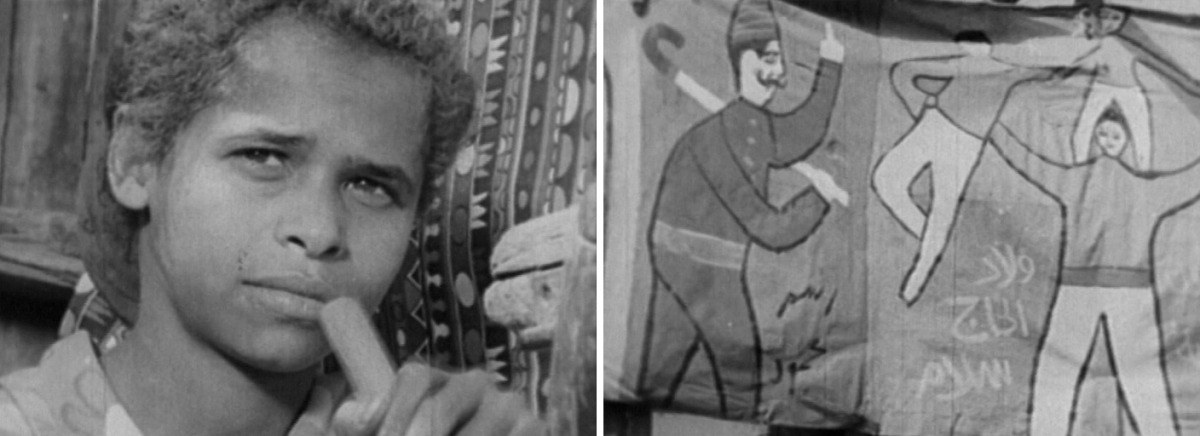“The only way for me as a filmmaker to express my feelings for them was to make a film”
A Conversation with Atteyat Al-Abnoudy
Atteyat Al-Abnoudy, a young Egyptian filmmaker, has won the Grand Prix du film documentaire in Grenoble and the International Federation of Film Critics prize for Horse of Mud. And for her film, she has won the Novais Teixeira prize: a prize founded in memory of our colleague who died last year and who was much loved by French critics. We met Atteyat Al-Abnoudy before she was awarded these important prizes, important for the direction she wishes to give to her work.

J.-F. Camus: These films produced by the Cairo Institute of Art, are they school films?
Atteyat Al-Abnoudy: After my law studies, I went to the Art Institute, and I was able to finish film school in two years. Whereas when you go right after high school, it takes four years. The Sad Song of Touha is the second film I made for my graduation. I co-produced the first one with Film Society in Cairo.
Your films very much cling to the characters and their gestures. In Horse of Mud, it’s brick factory workers and in The Sad Song of Touha street artists. Were you trained as a “researcher”?
When I start a film, I don’t think about its form. When I became friends with the people in the factory, the only way for me as a filmmaker to express my feelings for them was to make a film.
Did the artists in the second film perform especially for you?
No, they performed their usual act. At four o’clock in the afternoon in Egypt, it’s hot and I sleep. I kept hearing the same music from this troupe every day; I was waiting for that noise. I loved the show, so I met with them.
I had a lot of problems with the artists during the three days of shooting. They didn’t have identity cards. The police often put them in jail for two or three days. That’s what happened during the shoot. Or even, for example, the mother of the young child in the film who told me that they had gone to visit her brother in a nearby town.
Didn’t you choose the decor, though (which is very beautiful)?
Yes, and I deliberately chose Friday for the shoot because all the clothes are washed on Thursday and they hang them out to dry on the balconies in this narrow street on Friday.
Because of your attachment to the people, you feel that the film is political, but it’s hard to pin down.
In The Sad Song of Touha, I would have liked to say that society produces three or four-year-old little girls leading a very hard life. Why don’t they go to school? What are the dreams of these people? Why do they live like that? I want to ask a thousand questions. The spectator has to compare and give answers. I wanted to make a “stronger” film but it is only sad; just like the Egyptian character has been for thousands of years.
Are you going to continue working with documentaries?
The next film I would like to make at the National Film School in London will be a short film describing the day and night before my husband was arrested, accused of Communism, in 1966. It will be my story: the wife’s point of view. After that, I hope to make documentaries again, a film about the Palestinians. The National Film School has accepted the project as an ethnological film.
It seems that it would be very useful for the current overdramatized Egyptian cinema to make films like yours...
Yes, with dancers!
There are five or six young filmmakers, but there is no way of making them known. The bourgeois cinema has a lot of money, but the filmmakers of the working and peasant classes do not. There are no educated bourgeois in Cairo who would give us money to make progressive films. The bourgeois are landowners who are far removed from cultural life.
Are you from a peasant family?
I’m a shopkeeper’s daughter, but my husband is a popular Egyptian poet from the poorest region of Egypt. We met in Cairo, and he transferred his entire world (the people, the street, the peasants ...) to me.
Originally published without title in Jeune Cinéma, 71 (June 1973).